
Professor Suzanne Cory AC PresAA FRS
President of the Australian Academy of Science
Professor Cory is one of Australia’s most distinguished molecular biologists. She was born in Melbourne, and graduated in biochemistry from The University of Melbourne. She gained her PhD from the University of Cambridge, England, and then continued studies at the University of Geneva before returning to a research position at the Walter and Eliza Hall Institute of Medical Research in Melbourne in 1971. From 1996 to 2009 she was Director of the Walter and Eliza Hall Institute and Professor of Medical Biology at The University of Melbourne. She is currently a Vice-Chancellor’s Fellow at The University of Melbourne and Honorary Professorial Fellow at the Walter and Eliza Hall Institute. Her research has had a major impact in the fields of immunology and cancer and her scientific achievements have attracted numerous honours and awards. In 2010 she was elected President of the Australian Academy of Science.
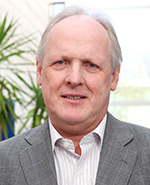
Professor Steve Furber FRS
University of Manchester, UK
Steve Furber CBE FRS FREng is ICL Professor of Computer Engineering in the School of Computer Science at the University of Manchester, UK. He obtained a BA in Maths in 1974 and a PhD in Aerodynamics in 1980, both from the University of Cambridge, and was Rolls Royce Research Fellow at Emmanuel College, Cambridge, from 1978-81. He then joined Acorn Computers where he was a principal designer of the BBC Micro, which introduced computing into most UK schools, and the ARM microprocessor, which today powers most of the world's consumer electronics, more than 40 billion having been shipped by ARM Ltd's semiconductor partners. At Manchester his research interests include Systems-on-Chip, low-power and asynchronous logic design, and neural systems engineering.
Building brains
The SpiNNaker (Spiking Neural Network Architecture) project aims to deliver a machine, ultimately incorporating a million ARM processors, optimised for running large-scale models of systems of spiking neurons running in biological real time. The major challenge in developing the machine has been to reproduce the very high levels of connectivity found in the brain; this has been achieved by using a very lightweight multicast packet-switched network that can carry very large numbers of very small packets, each carrying information about an individual neural spike. The full million-processor machine will be capable of running real-time models, omitting much of the biological detail, up to a complexity of 1% of the human brain.
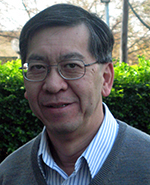
Professor Patrick Tam FRS FAA FSB
Children’s Medical Research Institute and Sydney Medical School
The University of Sydney
Professor Tam is the Deputy Director and Head of the Embryology Research Unit at the Children's Medical Research Institute. He is a Senior Principal Research Fellow of the National Health and Medical Research Council of Australia, and holds a conjoint appointment as Professor in the Discipline of Medicine at the Sydney Medical School, The University of Sydney. His research focuses on the elucidation of the cellular and molecular mechanisms of body patterning during embryonic development. Major effort is aimed at the understanding of the integration of the molecular control of gene activity and the signalling activity that mediates cell-cell communication and the coordination of cell differentiation in the formation of organs and major body parts. The knowledge gleaned from the embryological analysis and cell lineage investigation is applied to the enabling of directed differentiation of embryo-derived and induced pluripotent stem cells for regenerative and genetic therapy of developmental disorders.
How the brain is built: lessons from developmental biology
Formation of the brain begins early in development with the specification of neural precursor cells and the incorporation of this cell population into the basic body plan of the embryo. Ensuing development of the brain involves the generation of different types of brain cells from a self-sustaining pool of progenitor cells and the organisation of these cells into anatomical units of exquisitely complex architecture that subsequently evolves into distinct brain parts. Recent studies that track the behaviour of the brain cells in real time reveal a highly coordinated process of cell division, cell-cell interaction and morphogenetic movement of the cells during the formation of the cortex, the centre of high-order brain function for memory, cognition and learning. Results of developmental genetic studies of fetal mouse brain have highlighted the intricate cellular and molecular mechanisms underpinning the acquisition of regional and functional attributes of the brain. The major challenges ahead are the integration of this information into a holistic paradigm of gene regulatory network and molecular interaction cascade with a link of the output activity to the developmental processes; and the translation of the knowledge of developmental biology to the understanding of developmental defects and cell-based reparative therapy of the brain.

Professor Kathryn North AM MD FRACP
Murdoch Childrens Research Institute and The University of Melbourne
Professor North is Director of the Murdoch Children’s Research Institute and is David Danks Professor of Child Health Research at The University of Melbourne.
She is trained as a paediatric physician, neurologist and clinical geneticist and in 1994 was awarded a doctorate from the University of Sydney for research into neurogenetics. She completed a postdoctoral fellowship in the Harvard Genetics Program. Her previous positions include the Douglas Burrows Professor of Paediatrics, Faculty of Medicine,The University of Sydney (2004-2012) and Head of the Institute for Neuroscience and Muscle Research (2008-2012). Her laboratory research interests focus on the molecular basis of inherited muscle disorders - particularly the muscular dystrophies and congenital myopathies – as well as genes that influence normal skeletal muscle function and elite athletic performance. Her clinical research focuses on clinical trials of therapies for muscular dystrophy and neurofibromatosis type 1 - as well as the development of interventions for children with learning disabilities.
Professor North has received a number of awards for her research including the Sunderland Award from the Australian Neuroscience Society (2000), the Sutherland Lectureship by the Human Genetics Society of Australasia (2008), the GSK Australia Award for Research Excellence (2011), the Ramaciotti Medal for Excellence in Biomedical Research (2012) and the Member of the Order of Australia (AM) for service to medicine in the field of neuromuscular and neurogenetics research (2012). In 2012, Professor North was appointed Chair of the NHMRC Research Committee and a member of the NHMRC Council.
Learning disabilities in childhood – lessons from single gene disorders
Neurofibromatosis type 1 (NF1) is an autosomal dominant disorder with a frequency of 1 in 3,000. NF1 is a multisystem disorder characterised by pigmentary skin lesions and nerve tumours. However the most common neurological “complications” of NF1 in childhood are cognitive deficits and academic learning difficulties – including dyslexia, deficits in organising and planning and difficulties with sustaining and switching attention. Approximately 35-40% of children with NF1 have ADHD.
Understanding the neuropathological basis of the different types of cognitive dysfunction in NF1 is crucial to the development and design of potential therapies and interventions. Some cognitive deficits are associated with developmental/structural brain anomalies while other deficits are associated with biochemical defects and are more likely to be reversible and amenable to pharmacological therapy.
The NF1 gene is a tumour suppressor gene that modulates activity of the ras oncogene. Studies in NF1 mouse models have shown that abnormal ras activation is associated with impaired hippocampal based learning and that abnormal dopamine homeostasis is the primary biochemical defect underlying attention deficits in NF1. These animal studies have provided the preclinical evidence for current clinical trials in children with NF1, and also provide insight into the etiology of learning disabilities in the general population.
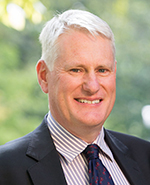
Professor Trevor Kilpatrick FRACP
Melbourne Neuroscience Institute, The University of Melbourne
Trevor Kilpatrick is a Professor of Neurology and Director of the Centre for Neuroscience Research and the Melbourne Neuroscience Institute at The University of Melbourne; he is the leader of the MS Division at the Florey Institute of Neuroscience and Mental Health and is a neurologist and Head of the MS Unit at the Royal Melbourne Hospital.
Professor Kilpatrick graduated with a Bachelor of Medicine, Bachelor of Surgery from the University of Melbourne in 1982 and then went on to specialise in neurology. He undertook graduate studies at The University of Melbourne and gained a Doctor of Philosophy in 1993 and a postdoctoral fellowship at The Salk Institute for Biological Studies (La Jolla, USA).
Professor Kilpatrick’s research interests include the neurobiology of multiple sclerosis, neural precursor cell biology and the study of genetic and environmental factors that contribute to MS as well as the translation of basic research discoveries to the clinic.
Middle years, focus on MS as complex disease: the interplay between genetic, environmental and clinical studies
Multiple sclerosis is the quintessential complex human disease with its pathogenesis reflecting a breakdown in homeostatic interactions between the immune and nervous systems; its effective interrogation therefore requires a systems biology approach. To date, more than 100 genetic loci, identified on the basis of variable frequencies of commonly inherited polymorphisms, have been found to contribute to the susceptibility of MS. However, the specific genes involved, the degrees to which rare genetic variants contribute to disease susceptibility and how the relevant genes interact all remain uncertain. Environmental associations include vitamin D deficiency, smoking and exposure to the Epstein-Barr virus: each probably exerts epigenetic influences upon the genetic determinants to influence gene expression in key pathogenic cellular subsets. Clinical scales arbitrarily subdivide the disease according to the spectrum and severity of clinical disability and are subject to confounders. Paraclinical measures, in particular imaging-based parameters, provide opportunity to subclassify MS in more biologically meaningful ways that reflect the underlying pathology and in so doing provide opportunity to identify the genetic determinants of disease severity as a preamble to enabling a pharmacogenomic approach to therapeutic intervention.
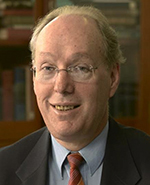
Professor Colin Masters FAA FTSE FRCPath FRCPA
Florey Institute of Neuroscience and Mental Health and The University of Melbourne
Professor Masters has focused his career on research in Alzheimer's disease and other neurodegenerative diseases, including Creutzfeldt-Jakob disease. His work over the past 35 years is widely acknowledged as having had a major influence on Alzheimer’s disease research worldwide. This work has led to the continued development of novel diagnostics and therapeutic strategies.
Professor Masters is currently the Executive Director of the Mental Health Research Institute, and a Laureate Professor at The University of Melbourne. He is also the Senior Deputy Director of the Florey Institute of Neuroscience and Mental Health, the Head of the Mental Health Division at the Florey and a consultant at the Royal Melbourne Hospital. His achievements have been recognised by the receipt of many international awards - including the Potamkin Prize (1990), the Max Planck Research Award (1992), the Zülch Prize (1995), the King Faisal Prize (1996), the Alois Alzheimer Award (1998), the Lennox K Black Prize (2006), the Grand Hamdan Award (2006), the Victoria Prize (2007), and the CSIRO Medal for Research Achievement (2011).
Progress in diagnostic and therapeutic strategies for neurodegenerative disease: testing the Aβ theory of Alzheimer’s disease
There is now compelling evidence that Aβ is the cause of Alzheimer’s disease (AD). Initially formulated as a hypothesis in the 1970s when characterisation of the amyloid deposits in AD started, after successful cloning of the APP gene in 1987, the evidence quickly amassed that Aβ/APP was at the core of AD, and that tau and neurofibrillary tangles were downstream of Aβ.
Over the past decade, this Aβ hypothesis has matured to a point where a comprehensive Aβ theory has emerged, in which oligomeric species of Aβ are responsible for causing synaptic degeneration in the AD brain. As with all scientific theories, one can only test their validity by challenging the concept. For the Aβ theory of AD, this means that tests of Aβ damage in the AD brain (for example, as assessed by PET-amyloid imaging and Aβ quantitation in CSF) must be incorporated into therapeutic strategies that target the Aβ pathway.
Our current goal is to identify and characterise the precise Aβ-related targets (the Aβ production pathways, the Aβ oligomer itself, the Aβ clearance pathways) and then develop appropriate therapeutic strategies. As an essential prerequisite, it is now clear that intervention must occur at the earliest possible stage of Aβ accumulation. Using longitudinal cohort analyses such as the Australian Imaging, Biomarker and Lifestyle (AIBL) study, the natural history of AD is becoming clearer, with the visualisation of Aβ accumulation commencing decades before the onset of cerebral atrophy and cognitive decline. These insights will enable definitive tests of the Aβ theory to be conducted in the near future.
Analyses of this type in Alzheimer’s disease are having a major impact in related neurodegenerative conditions such as Parkinson’s disease and Creutzfeldt-Jakob disease.
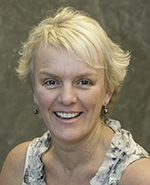
Professor Terrie Inder MD
Washington University, St Louis, USA
Professor Inder is a dual boarded child neurologist and neonatologist, who directs clinical and translational research into the nature and timing of brain injury in the preterm and high risk term born infant. She is the director of the Washington University Neonatal Development Research (WUNDER) team and the Washington University Intellectual and Developmental Disabilities Research Center (WUIDDRC). The WUNDER team conducts multidisciplinary research initiatives in paediatrics, neurology, radiology, obstetrics, and psychology centring back on studies at the bedside of newborn infants in the neonatal and paediatric intensive care unit at St. Louis Children's Hospital. The team focuses on efforts in the premature infant, the sick term infant, and the infant with cardiac diseases. This research utilises state of the art technologies in magnetic resonance (MR) imaging, electroenecephalography (EEG) and near infrared spectroscopy (NIRS) as tools to assist in understanding the timing and nature of brain injury in the newborn infant. The WUIDDRC consists of four research cores in imaging; neuropsychology and genetics; translational animal models; biostatistics and bioinformatics to accelerate research findings in infants and children both at risk and with developmental disabilities. The Center is funded by the National Institutes of Health and supports more than 50 investigators in addition to a central role in advocacy and support for children with developmental disabilities.
Imaging insights into brain development
The third trimester is a critical period for brain development that can be influenced by maternal factors and exposures and preterm birth. Magnetic resonance imaging has provided a key window into the nature of fetal and neonatal brain development defining cortical volumes, surface folding and cerebral microstructure. These techniques have defined typical brain development and alterations associated with preterm birth and maternal exposures. Importantly, alterations in brain development during this critical period have long lasting consequences on cognition and behaviour throughout childhood. This presentation will outline the techniques and their application in the understanding of brain development.

Professor Sarah Dunlop
The University of Western Australia
Professor Dunlop leads an integrated research program at The University of Western Australia and Royal Perth Hospital to promote functional recovery after traumatic injury to the nervous system (neurotrauma).
Laboratory studies on rodent models aim to understand mechanisms underpinning the spread of secondary degeneration to surviving, but vulnerable, tissue and preserve its function using technologies such as red light, pulsed magnetic fields and nanotechnology to target drug delivery.
Clinical studies focus on spinal cord injury. ICED (immediate cooling and emergency decompression) targets acute (within 1.5 hours) stages using hypothermia to minimise secondary degeneration, preserve tissue and thus maximise functional recovery. SCIPA (spinal cord injury and physical activity) involves three bi-national multicentre randomised controlled trials examining novel ways to exercise the paralysed limbs to promote long-term neurological recovery as well as improve physical and mental health. The trials span acute care to the community, reflecting lifetime needs of these patients.
Mind over matter: promoting recovery after spinal cord injury
We were born to move but woe betide us if we can’t. Paralysis resulting from spinal cord injury is far from “nothing”, and is accompanied by relentless catabolic assaults on the body. Significant local and remote humoral/inflammatory responses also contribute to ongoing secondary complications above those that can be explained by forced inactivity. Despite decades of basic and clinical research, and promising clinical trials, we are no further than providing incremental improvements in medical management. A radical rethink is required for both acute and chronic treatments. Ischaemic stroke demands thrombolysis within ~4h to preserve penumbral tissue, so why not spinal cord injury? ICED aims to deliver hypothermia within 1.5h of injury to buy time before emergency decompression, limit spinal cord swelling and preserve tissue. Even so, moving the paralysed limbs is extremely uncommon after spinal cord injury but may be the key to keeping tissue alive and promoting recovery in circuits that have survived but are silent due to lack of use. SCIPA involves novel physical means to move the paralysed limbs. Mind-brain interfaces may also unlock neural activity to promote movement and reduce comorbidities such as pain and depression.
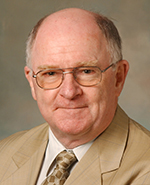
Professor Max Coltheart AM FAA FASSA FBA
Macquarie University
Professor Coltheart was educated at Bega High School and at the University of Sydney, and has held academic positions in departments of psychology in Australia, Canada, England and Italy.
He was Director of an ARC Special Research Centre, the Macquarie Centre for Cognitive Science, from 2000 until 2009, and is now a member of the ARC Centre of Excellence for Cognition and its Disorders at Macquarie University. His research interests are in cognitive neuropsychiatry (especially delusional belief) and cognitive neuropsychology (especially acquired and developmental dyslexia), as well as in computational modelling of cognitive processes.
He is a Fellow of the Australian Academy of Science, the Academy of the Social Sciences in Australia, and the British Academy, and an AM awarded for his services to children with learning difficulties.
Smarter research on pathologies of cognition
Research on pathologies of cognition typically begins by assembling a group of subjects with a common clinical diagnosis – schizophrenia, autism or depression for example – so that research can be carried out on that condition. But all such clinical conditions are heterogeneous – there is nothing, for example, that all people diagnosed with schizophrenia have in common, so what is the object of study here? This heterogeneity is directly due to the methods used to make such diagnoses; this is obvious when one looks at how the DSM-IV and DSM-V manuals instruct us to make these diagnoses.
That this diagnosis-based approach to research on pathologies of cognition is defective has recently been recognised by NIMH, whose Director announced in April 2013 that NIMH ‘will be reorienting its research away from DSM categories’. Instead, the focus will be on studying an individual symptom across many disorders. Professor Coltheart will discuss the advantages of this smarter way of studying pathologies of cognition, with particular reference to the investigation of delusions.

Professor Julian Savulescu
University of Oxford, UK
Professor Savulescu holds the Uehiro Chair in Practical Ethics at the University of Oxford. He is the Director of the Oxford Uehiro Centre for Practical Ethics within the Faculty of Philosophy. He is Director of the Oxford Centre for Neuroethics, which is one of three strategic centres in biomedical ethics in the UK funded by the Wellcome Trust. He is also Director of the Institute for Science and Ethics (which is one of the 10 founding institutes within the Oxford Martin School at the University of Oxford. He is also principal investigator for a major Arts and Humanities Research Council grant on cognitive science and religious conflict, and co-investigator of an Economic and Social Research Council grant on geoengineering.
He is editor of the Journal of Medical Ethics and founding editor of the Journal of Practical Ethics, an open access journal in practical ethics that was launched in June. His book, co-authored with Ingmar Persson, Unfit for the Future: The need for moral enhancement was published by Oxford University Press in July 2012.
The neuroscience of moral judgement
People with psychopathic personality traits are more likely to make utilitarian moral judgements, and beta adrenergic blockade increases deontological moral judgements. Professor Savulescu will examine our emerging understanding of the neuroscience behind our moral decision-making and how it can be can manipulated, and what this means for our understanding of ourselves. He will argue that given the potential for individuals to inflict harm on an unprecedented scale, which has been afforded by developments in nuclear and biological technology, the understanding and enhancing of our moral capacities is one of the most urgent tasks we face today.
© 2025 Australian Academy of Science